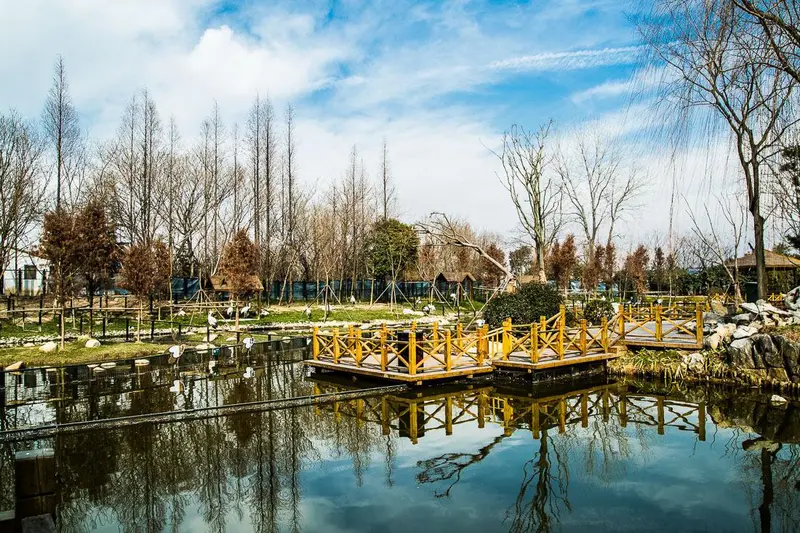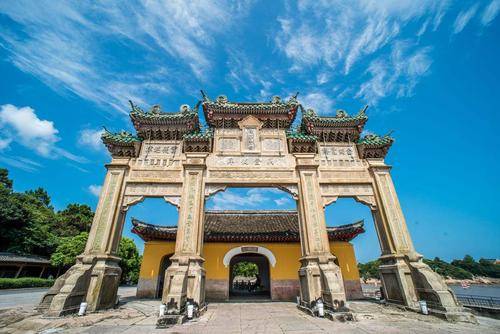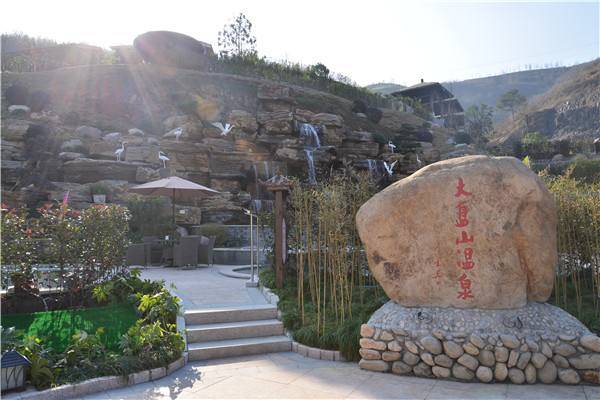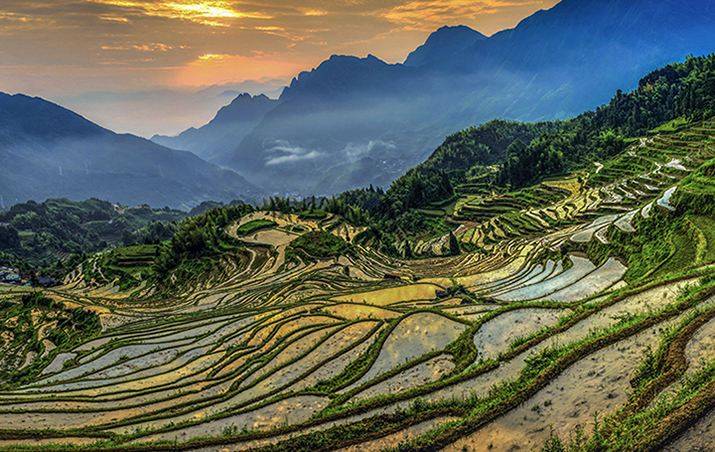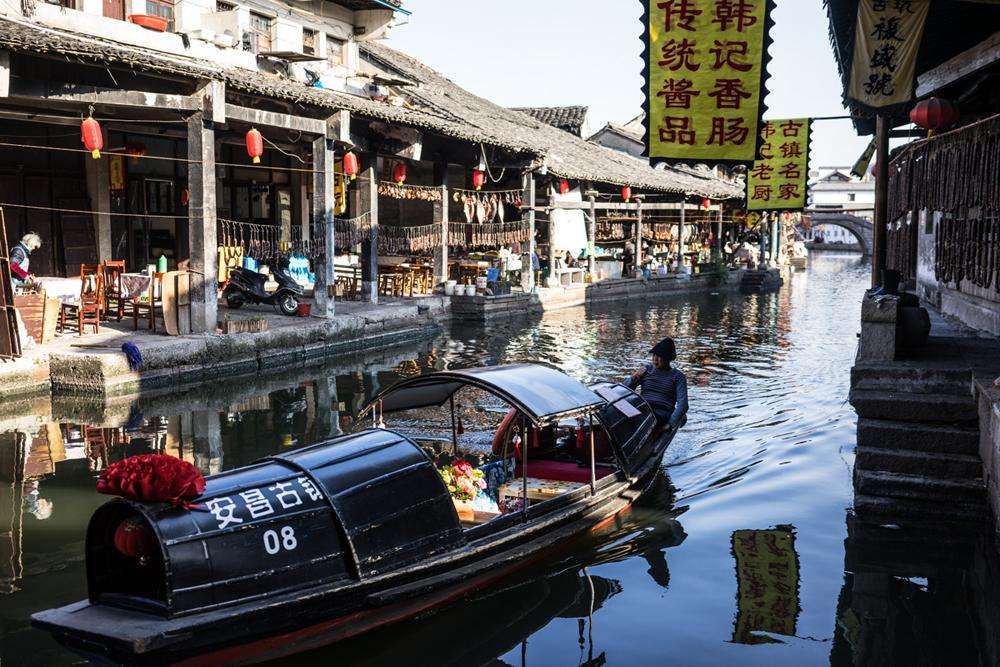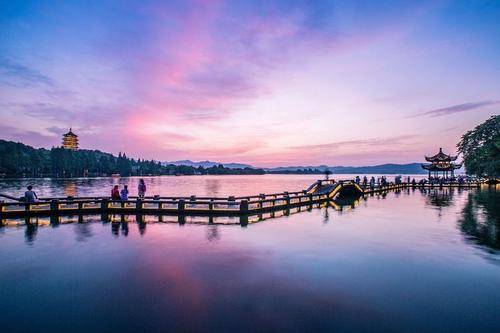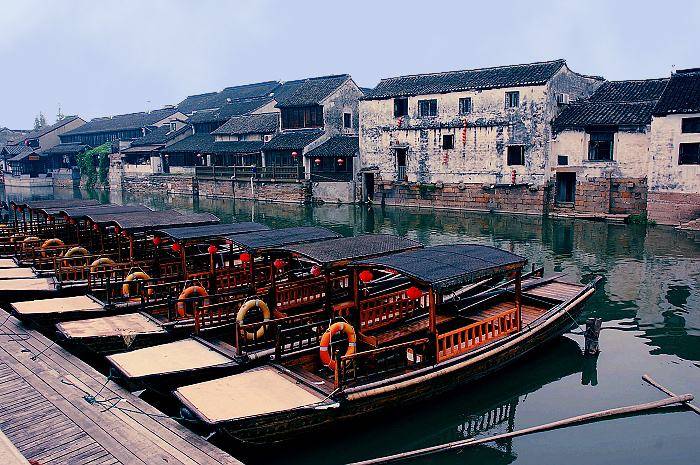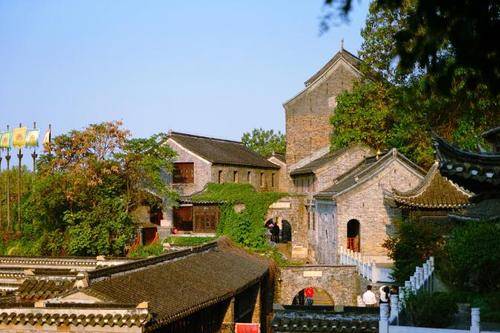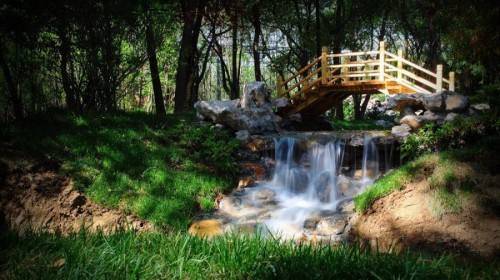Mount Putuo
"There is a fairy mountain in the sea, the mountain is in the midst of mist and clouds." Mount Putuo, along with Mount Wutai in Shanxi, Mount Emei in Sichuan, and Mount Jiuhua in Anhui, is known as one of the Four Sacred Mountains of Chinese Buddhism. It is acclaimed as the 'First Pure Land on Earth.' Mount Putuo is the most famous and spiritually potent Guanyin pilgrimage site in the country. Every Chinese New Year, people from various places gather here to pray for blessings for their families and themselves. When it snows, the red walls and white tiles contrast beautifully with the surrounding green pines and cypresses. Watching the sea, enjoying the snow, and worshipping Guanyin are experiences not to be missed.
Panan Dapan Mountain
In ancient times, Dapan Mountain was a secluded paradise where scholars and gentlemen would retreat. Most of the mountains in Panan have steep edges, but their tops are broad and flat like high platforms. Streams crisscross the mountains, with continuous gorges, numerous waterfalls and pools, and abundant fish and shrimp. Most of the scenic spots are named after the streams. The farmers at the foot of the mountain are very hospitable, offering delicious farmhouse dishes with unique flavors. The rice wine brewed by the villagers is also very fragrant, and there is an original distillery in the village open for visits. Besides sightseeing, local specialties such as Panan small-leaf Kuding tea, farm eggs, and shiitake mushrooms are also quite good.
Yunhe Rice Terraces
Yunhe Rice Terraces, built on mountains at an altitude of a thousand meters, are known as 'the most beautiful terraces in China.' Farmers have been cultivating here since the Tang Dynasty, and over a thousand years, this has gradually become the largest terrace landscape in East China. The best time to view the terraces is on foggy mornings. The layers of terraces are dyed golden, creating a dreamlike scene. Yunhe Rice Terraces have different charms in each season, but the snow-covered terraces in winter, wrapped in silver and adorned with a white blanket, are the most captivating. The sea of clouds, rime, and ever-changing scenery offer different surprises each time, making it a pilgrimage site for photography enthusiasts every winter.
Anchang Ancient Town is one of the four famous ancient towns in Shaoxing. It is picturesque and elegant, embodying the typical characteristics of the Jiangnan water town. You must witness the water wedding ceremony that showcases the charm of the water town. This is the hometown of Shaoxing's renowned scholars. The entire city becomes extraordinarily beautiful in winter. The snow-covered Lanting and Shen Garden are perfect places for poetry and painting. Sitting in a black-awning boat in Donghu, watching the snowflakes dance in the air; strolling along Cangqiao Straight Street and Bazhi Bridge, you can fully appreciate the ancient city of Shaoxing adorned in white.
West Lake in Hangzhou
In winter, West Lake, with its distant mountains and arch bridges reflecting in the water, takes people back to the era of Xu Xian and Bai Suzhen, evoking a sense of desolation. Due to the Broken Bridge's location facing the city and the mountains, right at the dividing point between the Outer Lake and the North Inner Lake, it offers a broad view and is the best place to enjoy the winter scenery of West Lake. Whenever the first snow clears, standing on Gemstone Hill and looking out, the sunny side of the bridge has already melted the ice and snow, so looking towards the sunny side, you see 'the snow remains but the bridge is broken,' while the shady side is still covered in white snow, hence looking from the shady side, you see 'the bridge is not broken.' Such poetic and beautiful scenery can only be seen at West Lake!
Qiandeng Town, Kunshan
Qiandeng Town is under the jurisdiction of Kunshan City and has a history of more than 2,500 years. It still retains the chessboard layout of 'parallel land and water' and 'adjacent river and street', as well as the ancient style of 'small bridges, flowing water, and households'. The stone slab street, known as 'a marvel of Jiangnan', was first built in the Southern Song Dynasty and was further extended and renovated during the Ming and Qing Dynasties. It is the longest and most well-preserved stone slab street in Jiangsu Province. In the winter sunlight, the feeling of 'stepping on green stone slabs, with a strip of sky above your head' is something you might want to experience.
Zhenjiang Xijin Ferry
If you haven't been to Xijin Ferry, you haven't been to Zhenjiang. Xijin Ferry Ancient Street is the 'cultural vein' of Zhenjiang, a city with a rich historical and cultural heritage. Walking down this old street, you can 'see a thousand years at a glance.' The night view of Xijin Ferry is even more stunning and not crowded. If you also enjoy ancient streets and alleys, and like to walk on the cobblestone paths, you will find the quiet winter afternoons perfect for discovering the sense of history hidden beneath every brick and tile.
Yangzhou Zhuyuwan
Zhuyuwan is the gateway where the ancient canal enters the urban area of Yangzhou from the north. Emperor Yang of the Sui Dynasty visited Yangzhou three times, and Emperor Kangxi and Emperor Qianlong of the Qing Dynasty passed through here six times during their southern tours. In the snowy winter, climbing the Plum Blossom Hill in Zhuyuwan and admiring the plum blossoms can dispel the cold and fill you with longing. Besides winter, in spring, Zhuyuwan is adorned with competing Cornus and peonies; in summer, you can stroll and cool off under the shade of trees. In autumn, the osmanthus and red maple trees display vibrant colors. Throughout the year, you can experience the most abundant and splendid scenes of nature here.
